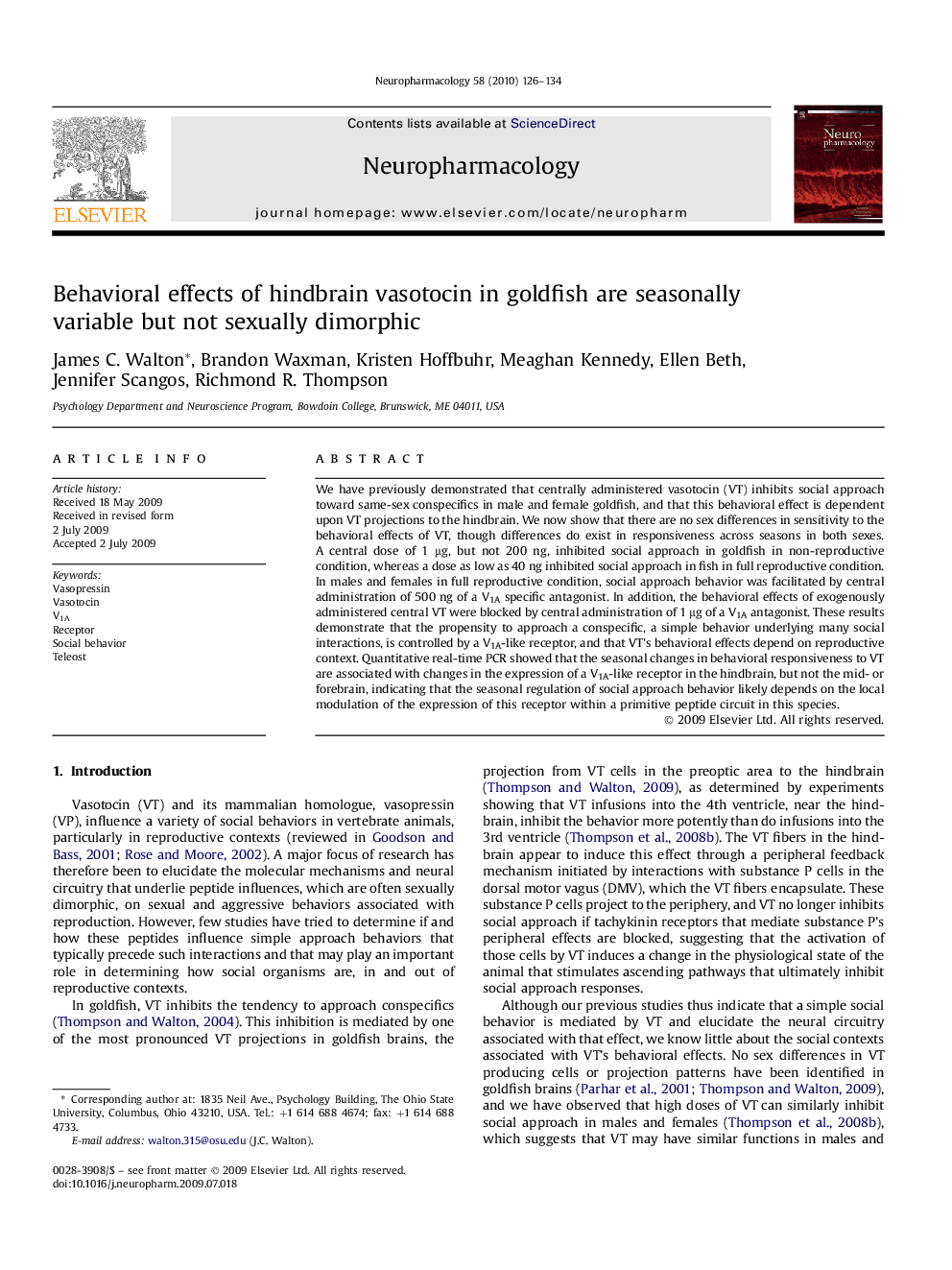| Article ID | Journal | Published Year | Pages | File Type |
|---|---|---|---|---|
| 2494178 | Neuropharmacology | 2010 | 9 Pages |
We have previously demonstrated that centrally administered vasotocin (VT) inhibits social approach toward same-sex conspecifics in male and female goldfish, and that this behavioral effect is dependent upon VT projections to the hindbrain. We now show that there are no sex differences in sensitivity to the behavioral effects of VT, though differences do exist in responsiveness across seasons in both sexes. A central dose of 1 μg, but not 200 ng, inhibited social approach in goldfish in non-reproductive condition, whereas a dose as low as 40 ng inhibited social approach in fish in full reproductive condition. In males and females in full reproductive condition, social approach behavior was facilitated by central administration of 500 ng of a V1A specific antagonist. In addition, the behavioral effects of exogenously administered central VT were blocked by central administration of 1 μg of a V1A antagonist. These results demonstrate that the propensity to approach a conspecific, a simple behavior underlying many social interactions, is controlled by a V1A-like receptor, and that VT's behavioral effects depend on reproductive context. Quantitative real-time PCR showed that the seasonal changes in behavioral responsiveness to VT are associated with changes in the expression of a V1A-like receptor in the hindbrain, but not the mid- or forebrain, indicating that the seasonal regulation of social approach behavior likely depends on the local modulation of the expression of this receptor within a primitive peptide circuit in this species.
